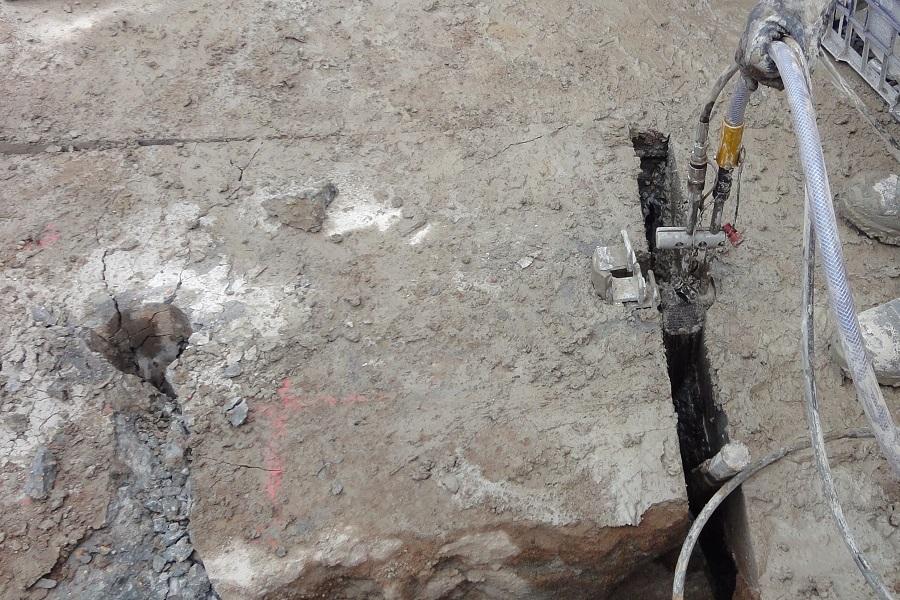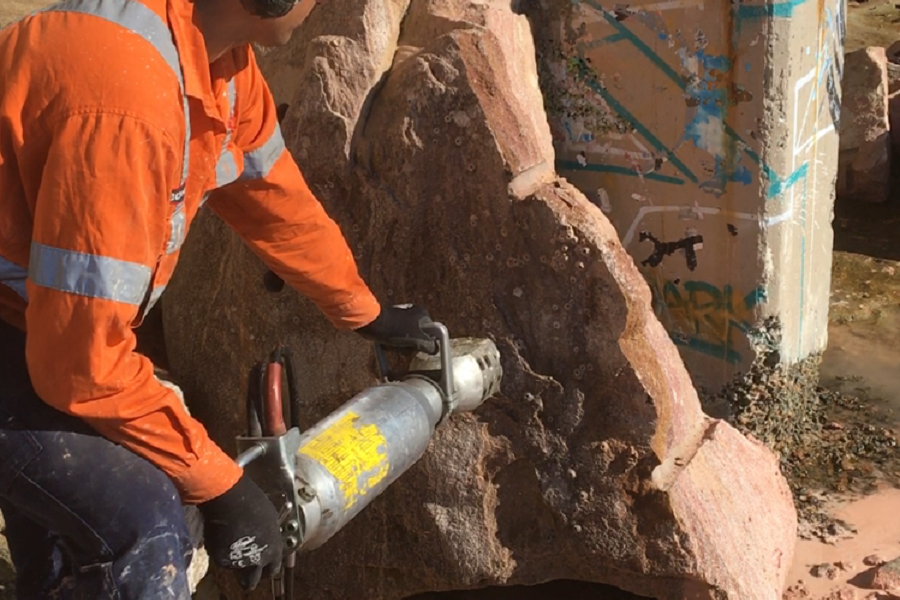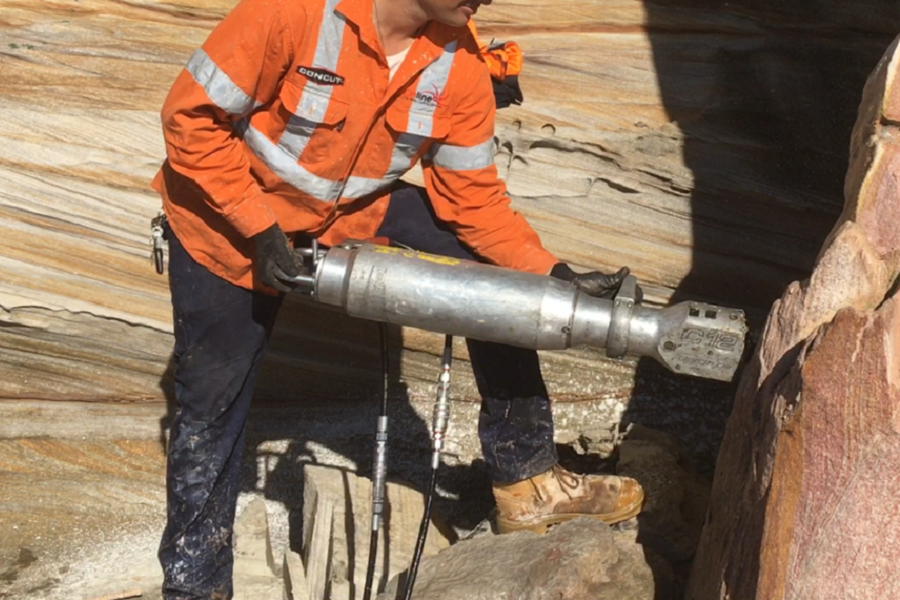Bursting and Splitting

What is concrete bursting?
Concrete bursting, also known also known as hydraulic bursting is a method of breaking solid rock or concrete structures by applying lateral forces within the object to split it into pieces as these lateral forces build up and create breaks. Prior to bursting, a series of holes needs to be core drilled into the area needing to be removed. Hole sizes usually range from 115mm or 200mm in diameter. The burster head is then placed into the holes one after the other, placed under pressure forcing the burster head pistons to expand within the hole, cracking the concrete along the path of least resistance emanating from the core hole where the bursting head was inserted. This is repeated until all the area targeted for removal has been separated and broken into smaller pieces.
What is Concrete Splitting?
Concrete splitting, also known as hydraulic splitting, is a method of splitting material such as concrete or rock where powerful hydraulic wedges are inserted into pre-drilled core holes and mechanically expanded until the material is forced apart. Once the integrity has been broken down, the concrete or other material can be removed using your preferred method.
Darda Splitting sequence, first a hole of a precise diameter and depth is drilled into the material. Then the splitter wedge set (one wedge and two counter wedges) is inserted into the core hole drilled. The wedge is then driven forward under hydraulic pressure, forcing the counter wedges apart. The material splits within seconds of pressure being applied. Enlarging counter wedges can be used to expanded the split as required.


Benefits include
- Minimal vibration, dust free. Neither the core hole drilling or the actual bursting produce much if any vibration or dust which makes it perfect for use in occupied work areas.
- Silent demolition. The initial drilling of the holes during this method produces minimal noise, whilst the concrete bursting process is virtually silent. This makes it an extremely quiet method of demolition compared with others, making it ideal for use near occupied commercial and residential areas.
- Facilitate large structure removal. Regardless of the thickness or strength of the structure being removed, bursting will break the structure into smaller pieces to allow removal.
Bursting & splitting applications include:
- Removing large masses, plinths, suspended floor slabs, reinforced concrete walls or other redundant reinforced concrete structures
- Working in environments such as office blocks, shopping centres, residential buildings and hospitals - anywhere that requires large lumps of material removed quietly and free of vibration
- For use in close quarters and hard to access places where space is restricted or confined